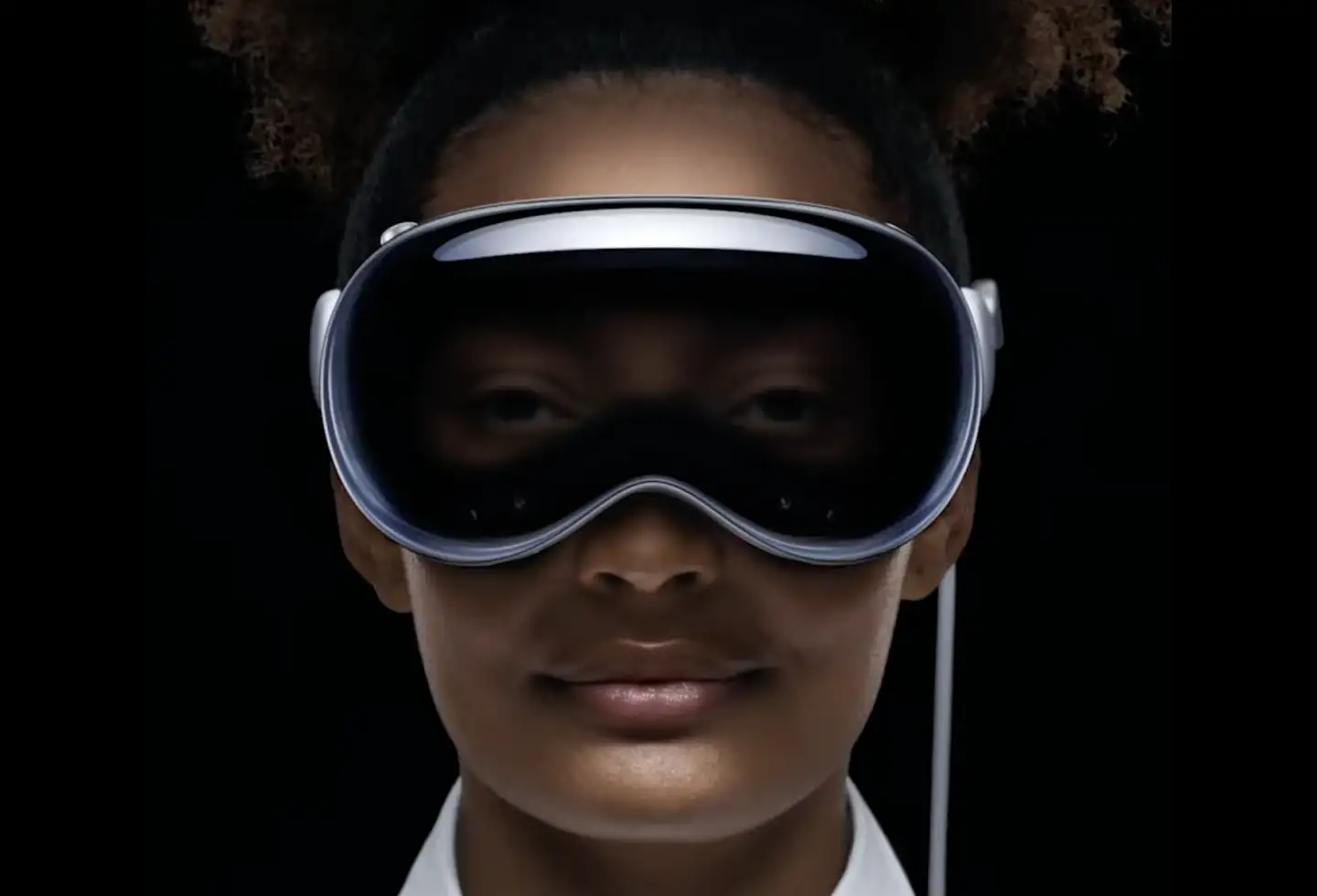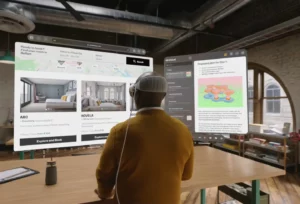Extended reality (XR) is an umbrella term encompassing augmented reality (AR), virtual reality (VR), and mixed reality technologies that immerse users in digital environments and superimpose computer-generated sensory inputs onto the real world.
The healthcare industry is increasingly embracing XR across the patient care continuum given its ability to enhance visualization, simulation, and telemetry in innovative ways not previously possible.
From 3D anatomical modeling to virtual twinning of operating rooms, XR has the potential to revolutionize surgical planning, physician training, and patient education.
The key value propositions include improved treatment personalization, accelerated learning, reduced costs, and expanded access to high-quality care.
However, real-world adoption has been gradual given the nascency of hardware solutions, software platforms, infrastructure readiness, and lack of regulatory clarity.
Overview of Apple’s Vision Pro Headset and Capabilities
Announced in January 2023, Apple’s Vision Pro represents a breakthrough in the spatial computing headset arena featuring best-in-class graphics, simulation capacity, and connectivity.
Weighing just over 1 pound, the sleek ergonomic design houses dual 4K OLED displays spanning a combined 120-degree field of view along with 10+ sensors for spatial and gesture tracking.
The headset packs onboard storage and memory capabilities exceeding most laptops while harnessing the processing muscle of Apple’s flagship M2 chip.
This enables graphically intensive XR workflows including multi-user shared experiences, precision overlaying of digital assets, and lifelike renderings of everything from patient anatomy to operating room equipment.
With expansive sound reproduction, intelligent text input, and intuitive controls, Apple is positioning Vision Pro as the epicenter for next-generation immersive healthcare applications from surgical planning to physician training and patient education.
Its computing foundation sets the stage for the seamless adoption of emerging AI, cloud analytics, IoT, and allied technologies maximizing the disruptive potential of XR across the care continuum.
Vision Pro Headset Hardware
As the vanguard device ushering in Apple’s spatial computing aspirations, Vision Pro boasts custom-designed hardware representing orders of magnitude improvements over preceding AR/VR headsets.
By integrating best-in-class displays, sensors, computing power, and industrial design ergonomics, Vision Pro aims to unlock immersive experiences previously encumbered by technological limitations.
Technical Specifications
Twin micro OLED displays each offer a resolution exceeding 2K in a lightweight form factor totaling just over 1 pound with the headband.
The combined field of view spans 120 degrees with seamless 60Hz video playback delivering a sense of presence and immersion thus far unmatched.
Onboard computing leverages Apple’s workhorse M2 chip including a dedicated media engine. With CPU performance rivaling a MacBook Pro, the headset packs 16GB of ultra-fast unified memory and 256GB SSD expanding the boundaries for graphics, simulation, connectivity, and multi-tasking.
An array of 10+ sensors handles everything from positional tracking to spatial mapping and scene reconstruction. Hand tracking is achieved via dual on-device cameras while LiDAR depth sensing enables real-time room scanning.
Additional cameras capture video for mixed-reality compositing and external viewing.
Ergonomic Design for Medical Use
In designing Vision Pro hardware for comfort during extended medical workflows, Apple emphasized adjustability, weight distribution, and sanitizable materials. The open-back headband features a ratcheting knob for cup adjustment while lightweight carbon fiber material offsets front heaviness.
The clinical white finish resists stains and residues while allowing easy disinfection after each use. Swappable nose pieces cater to comfort levels and facial geometries.
Overall, Vision Pro’s ergonomic design makes it suitable for lengthy surgical planning or simulation sessions without strain or visual fatigue.
Medical Applications and Use Cases
Spanning the patient care continuum from diagnosis through recovery, Vision Pro unlocks a new generation of medical applications harnessing the disruptive power of spatial computing.
Surgical Planning and Simulation
Leveraging LiDAR scanning and AI-driven segmentation algorithms, Vision Pro creates interactive 3D renders of patient anatomy with far greater veracity and depth perception compared to traditional 2D imaging modalities.
Physicians can digitally zoom into specific anatomical structures, measure dimensions to sub-millimeter precision, and immerse themselves within the operative zone—exploring incision approaches and internal navigation pathways pre-operatively to a level of detail thus far impossible.
Complex surgeries can be simulated repeatedly, equipping surgical teams to account for contingencies and refine procedural sequencing to minimize errors and enhance patient safety during the actual surgery.
Physician Training
Through Vision Pro, resident physicians, and nurses can access libraries of interactive simulated procedures spanning routine to specialized surgeries. Expert commentary overlaid in real-time explaining anatomical nuances and proper instrumentation techniques, and techniques.
Remote proctoring also opens up training pathways allowing veteran physicians to look through the trainees’ eyes, and guide spatial annotations, fostering life-like operating room environments cost-effectively.
Patient Education and Consent
Rather than static brochures and surface-level descriptions, Vision Pro provides patients with an immersive window into planned treatments, medications, and post-procedural care regimens.
Patients can self-navigate 3D renders of their actual anatomy, envision planned surgical repairs, and familiarize themselves with equipment usage—greatly enhancing knowledge and comfort.
Vision Pro further presents a transformational upside for informed patient consent processes before invasive treatments. Legal risks for healthcare providers are also mitigated by confirmation of patient understanding.
Benefits for Healthcare
As an expansive spatial computing platform, Vision Pro stands to confer substantive benefits across the healthcare ecosystem spanning enhanced patient outcomes, improved efficiency and cost savings, and democratized access to high-quality treatment.
Improved Patient Outcomes
By facilitating hyper-realistic 3D anatomical reconstructions and immersive surgical planning, Vision Pro allows physicians to optimize procedural approaches resulting in less invasive surgeries, smaller incisions, faster recovery times, and reduced complications.
The headset further enables continuous physician training refinement through simulated rehearsals.
Reduced Costs and Enhanced Efficiency
From expedited surgical theatres to remote expert guidance, Vision Pro unlocks myriad workflow enhancements that translate to cost savings. Operating rooms can be digitally replicated allowing full procedural rehearsals without resource overheads.
Expert mentoring is also democratized lowering costs associated with traditional medical training and education.
Democratized Access to Care
By virtualizing expertise, Vision Pro expands patient access to high-quality care irrespective of geography. Top physicians can proctor complex treatments remotely while nurses guide patients through routine post-operative care virtually.
AR-based tools further empower patients to self-diagnose issues accurately. Combined with emerging telehealth infrastructure, Vision Pro helps democratize best-in-class healthcare.
The convergence of spatial computing, connectivity, and medical-grade capabilities makes Vision Pro a truly transformative platform set to reshape healthcare experiences for all stakeholders.
Challenges and Limitations
While Apple’s Vision Pro platform represents a technological quantum leap for spatial computing in medicine, real-world implementation faces an array of challenges requiring mitigation.
Risk management across clinical, regulatory, privacy, and accessibility dimensions will dictate the pace of mainstream adoption.
User Adoption and Accessibility Barriers
As an emerging modality, vision prosthesis use cases require physician mindshare and workflow integration. Holistic training to drive user adoption is imperative.
Frontline staff such as nurses will also require guidance to harness Vision Pro tools to improve patient experiences. Institutional inertia must additionally be overcome.
The headset’s steep $3000 price point also hinders accessibility for many hospitals and clinical centers—especially in emerging geographies. Subsidized deployments may be necessary to democratize access until economies of scale bring down pricing.
Regulatory Hurdles
While software and apps qualify as non-medical SAAS offerings, Vision Pro’s intended use for diagnosis and treatment guidance opens up regulatory risk.
Stringent protocols around quality assurance, data security, efficacy validation, and liability management will need to be surmounted to achieve FDA approvals globally. This may necessitate restrictive feature sets in initial commercial iterations.
Privacy and Security Concerns A key priority around Vision Pro-based tools for patient diagnosis or data visualization is stringent privacy preservation and enterprise-grade security protocols given the highly sensitive personal information involved.
Data encryption, access controls, and cyber threat management require careful navigation to maintain consumer trust and provider credibility.
By proactively addressing these multi-faceted challenges, Apple can enable Vision Pro’s responsible yet rapid integration into tomorrow’s healthcare infrastructure.
The Road Ahead
While substantial obstacles exist, Vision Pro has firmly aligned Apple as the prime innovator leading healthcare’s spatial computing revolution. Continuous technological and ecosystem advancements will further the platform’s disruptive potential across medical domains.
Overcoming Challenges via Innovation
Apple is strategically placed to leverage its pedigree of human-centered design and engineering excellence to surmount adoption barriers. Intuitive interfaces, expanding use case libraries, and multi-stakeholder partnerships will drive integration with provider workflows.
Regular hardware upgrades will also maintain competitive differentiation. Future headset iterations are expected to be lighter, faster, and more immersive—catering to the comfort and capabilities requisites of various clinical applications.
Emergence of New Applications
Beyond leading with surgical visualization, physician training, and patient education, Vision Pro’s spatial computing foundation is expected to expedite new medical use cases.
As developers tap into 3D mapping, simulation, and sensing toolkits, innovative apps spanning rehabilitation, telehealth, robotic surgery assist, and early diagnosis may emerge.
Spearheading the XR Healthcare Revolution
Underpinning telehealth infrastructure modernization, Vision Pro has effectively inaugurated spatial computing’s coming of age within the healthcare arena.
Although substantial runway exists, Apple is strategically poised to continue building ecosystem synergies, mitigating risks, and exploring new frontiers where visual computing intersects medicine.
Within the next decade, Vision Pro promises to be remembered as the technological impetus behind healthcare’s XR revolution—helping unlock the next generation of patient experiences while saving lives.
Conclusion
As outlined, Apple’s recently unveiled Vision Pro spatial computing headset holds remarkable promise to fundamentally reshape key dimensions of healthcare spanning surgical planning, physician training, patient engagement, and even early diagnosis.
By merging state-of-the-art display resolution, immersive 3D reconstruction, intuitive gesture controls, and unparalleled processing muscle, Vision Pro has effectively set the benchmark for extended reality solutions enhancing everything from anatomical visualization to simulated rehearsals.
Already garnering enthusiasm across leading hospitals and medical technology pioneers, Vision Pro adoption is expected to improve patient outcomes, optimize procedural efficiency, lower costs, and help democratize emerging best practices globally.
However, for such ambitious potential to manifest fully, compelling enterprise-grade security, privacy safeguards, and regulatory compliance will be imperative—especially for patient data access and advanced clinical workflows.
Responsible innovation spanning technological, commercial, and ethical dimensions is vital.
Yet Apple is strategically positioned to overcome these multi-faceted challenges through relentless cross-functional R&D pursuits and forging synergistic health sector partnerships worldwide.
With continuous improvements across comfort, capability, and connectivity parameters, Vision Pro successors may push spatial computing’s medical utility even further over the coming decade.
As the gateway device ushering XR’s expansion into healthcare, Vision Pro has firmly positioned Apple at the vanguard of this computing paradigm shift.
Looking ahead, Vision Pro will likely be remembered as the technological impetus that helped unlock medicine’s next revolution—empowering providers to save and enrich many more lives globally via tools once unimaginable.





